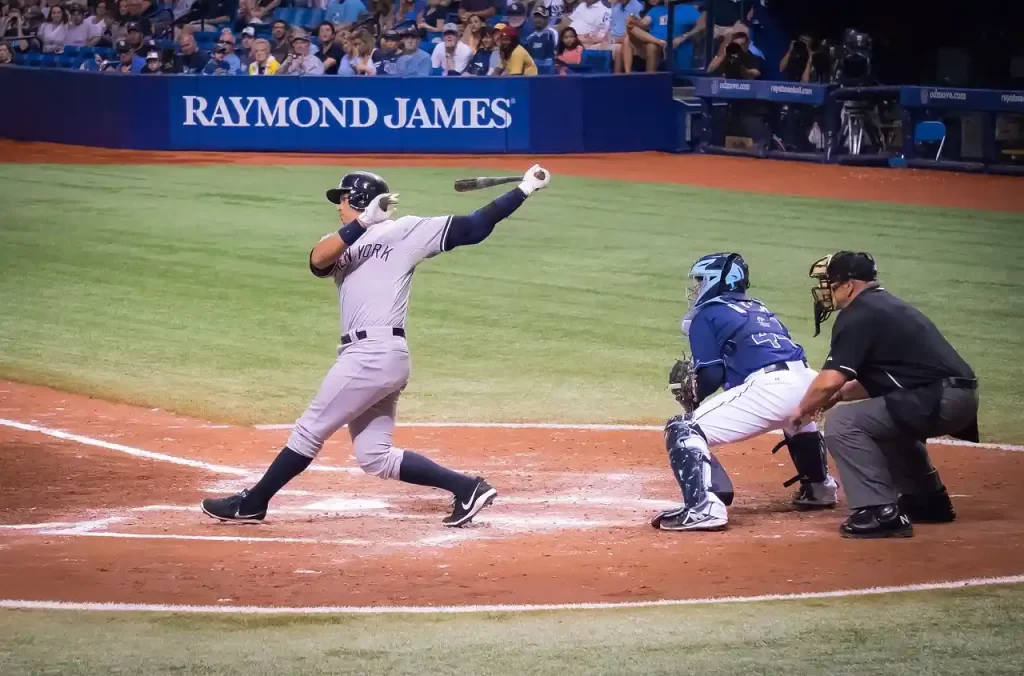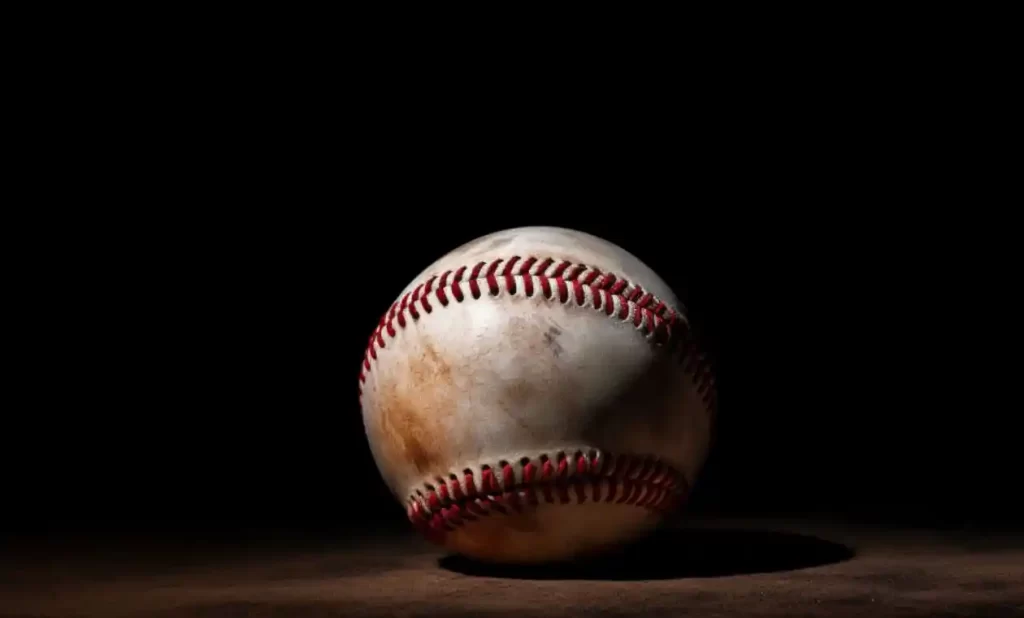
Hey there, fellow baseball enthusiasts! Today, we’re diving into the thrilling universe of baseball metrics, and our star for the day is none other than Wins Above Replacement (WAR). Now, don’t worry if the term sounds like an alien language; we’re here to decode it together!
Let’s unravel the mystery a bit. Wins Above Replacement is like the superhero statistic of baseball. It’s the caped crusader that tries to quantify a player’s total contribution to their team. So, in simpler terms, it’s our way of figuring out who the real MVP is.
You might be thinking, “Why bother with this fancy number-crunching?” Well, understanding a good WAR is like having a secret weapon. It helps us see beyond the obvious stats and truly appreciate a player’s impact. It’s the key to unlocking the hidden treasures of baseball greatness.
Imagine having the power to decipher player performances beyond the usual batting averages and home runs. WAR gives us that power! So, stick around as we embark on this epic journey to explore what makes a good WAR in baseball and why it’s the game-changer every fan secretly wants to be.
Also Read: What Is a Balk in Baseball?
What Is a Good WAR in Baseball?
Ah, the million-dollar question – What makes a WAR “good”? Let’s demystify this beast with some dad-approved clarity.
The ABCs of WAR
Alright, let’s start with the basics. Wins Above Replacement, or WAR, is the ultimate measure of a player’s value. It takes into account everything a player does – hitting, fielding, running – you name it. It’s like a report card, but for baseball.
A Sneak Peek into the Components
But what exactly goes into this magical number? Well, it’s a mix of offensive and defensive skills, sprinkled with a dash of positional adjustments. Think of it as the recipe for grandma’s secret sauce – it’s got a bit of everything.
The Goldilocks Zone – What’s “Good”?
Now, onto the million-dollar question: What’s considered a good WAR? It’s a bit like Goldilocks finding the perfect bowl of porridge. Too low, and you might want to up your game. Too high, and you might just be the MVP. The sweet spot? That’s what we’re aiming for.
Where Does It Stand in the Industry?
Imagine WAR as the cool kid in school – everyone wants to be friends. But how do we know if it’s the popular kid or just hanging in the background? That’s where industry standards come in. We’ll dive into the benchmarks and see where a good WAR stands in the grand scheme of baseball metrics.
The Great Showdown – WAR vs. Other Metrics
Now, WAR isn’t the only player in the game. We’ve got batting averages, home runs, and more. It’s like a superhero team-up, but who’s the real hero? We’ll pit WAR against other metrics in the ultimate showdown.
Factors Influencing a Good WAR
Alright, buckle up, folks! We’re about to dig into the factors that make a WAR shine bright like a baseball diamond.
First base, second base, third base… no, we’re not playing a kids’ game. We’re talking about the bases players touch while wielding their mighty bats. Offensive contributions in a good WAR are like hitting a home run – it’s a grand slam for a player’s value.
Picture this: a player gracefully gliding across the field, making jaw-dropping catches and stopping balls in their tracks. That’s the dance of defensive contributions. Think of it as the player saying, “Nope, not on my watch!” It’s like having a superhero in the outfield.
Now, not all positions are created equal. Playing shortstop or catcher is like being the hero in the spotlight, while some positions are more in the shadows. Positional adjustments in a good WAR give credit where credit is due – recognizing the unsung heroes and the spotlight-stealers.
You know that saying, “There’s no ‘I’ in team”? Well, it holds true in baseball too. Team context in a good WAR is like the secret sauce that makes everything taste better. A player’s value is not just about personal stats; it’s about how they contribute to the greater good – the team.
Now, let’s wrap it up with a bow. Player value in a good WAR is like measuring a player’s impact on the game. It’s not just about hitting home runs or making dazzling catches; it’s about being the glue that holds the team together. In other words, it’s about being the unsung hero in the baseball saga.
Also Read: Inside Baseball Core Cover
Career Impact of a Good WAR
Alright, folks, grab your peanuts and cracker jacks. We’re about to explore how a good WAR can turn a player’s career into an epic tale.
The Career MVP Boost
Picture this: a player consistently racking up a good WAR season after season. It’s like having an MVP sticker on their baseball cap. A good WAR isn’t just a stat; it’s the golden ticket to a player’s Hall of Fame dreams.
Contract Negotiations 101
Think of a good WAR as a player’s resume. When it comes to contract negotiations, a high WAR is like having a sparkling resume with all the right experiences. Teams are more likely to open their wallets wide for players with a track record of stellar performance.
Legacy Building – One Good WAR at a Time
Let’s talk legacy. A player’s career isn’t just about the numbers on the scoreboard; it’s about the stories told around the campfire. A good WAR contributes to a player’s legacy – it’s the stuff that baseball folklore is made of.
Historical Heroes with Notable WAR
Now, let’s flip through the dusty pages of baseball history. We’ll find names like Babe Ruth, Willie Mays, and Hank Aaron. What do they have in common? Besides being legends, they boast notable career WARs. It’s like having a VIP pass to the Baseball Hall of Fame.
A Tale of Numbers and Legends
In the grand saga of baseball, numbers are the unsung heroes. Players with high career WARs aren’t just remembered; they’re immortalized. It’s the tale of turning stats into legends and creating a lasting legacy in the baseball pantheon.
Best WAR Metrics in Baseball
Alright, sporty pals, time to demystify the world of WAR metrics. It’s like choosing the right flavor of ice cream – lots of options, but only a few are your true favorite.
Imagine the world of WAR metrics as a buffet. We’ve got bWAR, fWAR, and WARP – not just random letters, promise. Each metric is like a different dish, with its own unique flavor. They all measure a player’s value but might sprinkle in a bit of this or that.
Let’s talk about the perks. Baseball-reference WAR (bWAR) loves its traditional stats, like grandma’s secret recipe. Fangraphs WAR (fWAR) dives deep into advanced metrics, like the tech geek of the group. Wins Above Replacement Player (WARP) brings in its own set of criteria, making it the rebel in the group. Each metric has its strengths, like players on an all-star team.
Now, every superhero has its kryptonite. bWAR might not catch all the advanced nuances. fWAR might get a bit too fancy for some tastes. WARP, rebellious as it is, might not align with the mainstream. It’s like having a favorite superhero with a minor flaw – part of the charm.
Choosing the right WAR metric is like finding the perfect sidekick. It depends on what you value. Are you a stats traditionalist? Go for bWAR. Love diving into advanced analytics? fWAR is your go-to. Feeling rebellious and want a unique perspective? WARP might be your partner in crime. The choice is yours, my friend!
In the end, it’s not about finding the ultimate winner. It’s about finding what works for you. Our recommendation? Dip your toes into each metric pool, see which one feels like home run, and embrace it like a loyal fan. Because when it comes to WAR metrics, it’s not about the numbers; it’s about the love for the game.
Also Read: Aluminum vs. Wooden Bats
In Crux
Alright, my baseball buddies, it’s time to close the playbook and recap what we’ve learned about the elusive world of WAR. Grab your baseball caps; here’s the grand finale!
So, what did we uncover today? Wins Above Replacement (WAR) isn’t just a bunch of confusing stats. It’s the superhero metric that tells us who the real MVP is on the baseball field. From offensive hits to defensive prowess, it’s like the all-you-can-eat buffet of player performance.
Finding that sweet spot of a good WAR is like discovering the perfect nacho topping. It’s not too low, not too high – just right. It’s the Goldilocks zone where players become the unsung heroes of the game.
Remember, it’s not just about personal stats. It’s the dance between offensive and defensive moves, the positional adjustments, and the team spirit that creates a good WAR. It’s the magic that turns players into legends.
A high WAR isn’t just a number; it’s the golden ticket to a player’s Hall of Fame dreams. It influences contract negotiations, builds legacies, and places players in the elite ranks of baseball history.
As we explored the best WAR metrics – bWAR, fWAR, and WARP – it’s like choosing your favorite ice cream flavor. Each has its own charm and quirks. The key? Find the one that resonates with you and make it your loyal sidekick.
So, what’s the takeaway? Dive into the world of WAR, explore the metrics, and enjoy the game beyond the numbers. Encourage your fellow baseball fanatics to join the conversation. Because in the end, it’s not just about understanding WAR; it’s about celebrating the love for America’s favorite pastime.

Meet Daniel Anderson, the heart and soul behind Baseball Pro Picks. At 49, Daniel’s life has revolved around baseball, a passion that’s as strong today as it was when he first fell in love with the game. Living in the USA, Daniel has dedicated countless hours to watching, analyzing, and understanding every pitch, hit, and home run, making almost no game missed. His deep-rooted love for the sport is matched only by his commitment to sharing insightful, expert analysis with fellow baseball enthusiasts. With decades of experience and a keen eye for the game’s nuances, Daniel brings a unique perspective that enriches Baseball Pro Picks. Trust Daniel to guide you through the intricacies of baseball with the authority and trustworthiness of a true aficionado.












